
TARGET 100203
Climbing a Waterfall
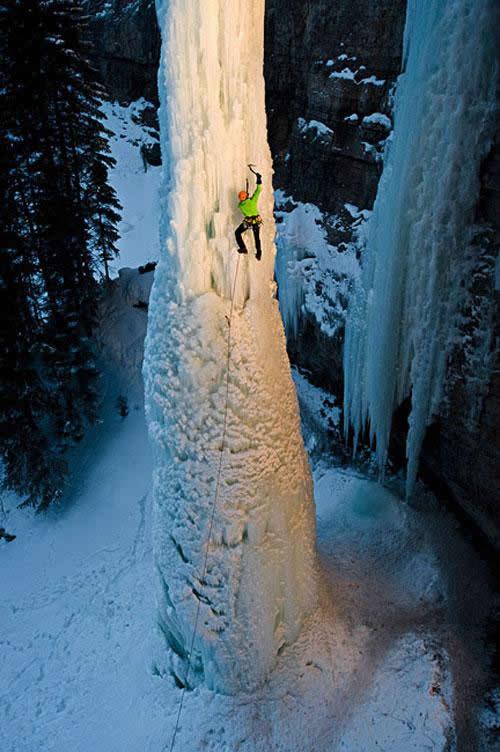
Well, OK. The waterfall is frozen. It would be pretty hard to climb one that wasn't.
REmember how, when the weather dips below freezing, it is a good idea to leave a faucet or two dripping overnight because moving water won't freeze? Well, moving water WILL freeze, but it has to REALLY be cold!!!.
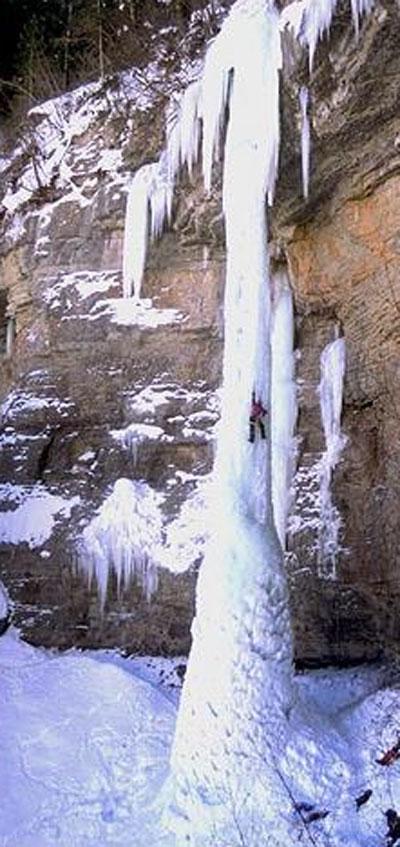
Many people are familiar with the sport of rock climbing. Ice climbing, on the other hand, is a less familiar, more dangerous story.
The sport usually involves a two-person team attacking a waterfall or the icy face of a mountain. only the most daring (some say the most foolish) climber will attempt a climb alone.
Even with a partner, the lead climber ascends the ice by swinging a pair of ice axes. The sharp tips of one axe cuts into the ice and becomes the handhold to allow the climber to pull the other axe loose from its place and swing it into a higher spot. For footholds, the climber wears sharp spikes, called "crampons", on his boots. The crampons can be kicked into the ice, affording a tenuous platform.
The climber also puts in tubular ice screws, anchors that act as protection. A rope is clipped into the screws to provide a catch point, should he fall. If there are two climbers, the one below hold tightly to the rope, in order to stop the higher climber, should a fall take place. These screws are placed into the ice about every ten feet.
Of course, if the climber 10 feet above the last ice screw and hasn't anchored the next one when he falls, he will actually fall 20 feet or more before the rope catches him. Hopefully, the weight of his fall will not start pulling the ice screws out of the ice, at which time, he may not stop until he gets to the bottom.
Many climbers consider ice climbing the most dangerous mountaineering activity. Climbing a frozen cascade of ice is nothing like ascending a spire of rock, since ice is incredibly more variable. It could be likened to soft glass. At times, it will hold, and at other times, it just shatters, fractures, and has pieces breaking away without warning. Ice falling from above or the collapse of the entire structure are very real threats.
Armed with ice tools and crampons, climbers have up to 29 sharp points attached to the ice at any given time. Putting the back of one leg with the crampon on the other foot can completely disable the climber's ability to even get back down again. Hitting oneself with one of the ice axes or driving one of the ice screws into a hand are also dangers that ice climbers face. Every year throughout North America, climbers are killed while ascending ice.
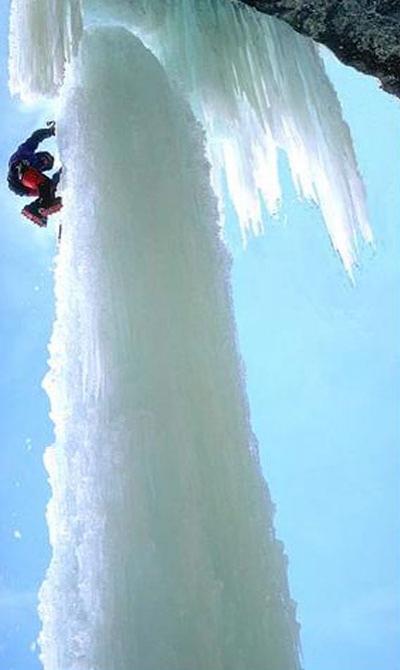
As you go higher, the ice is less dense, and even changes its form and consistency....
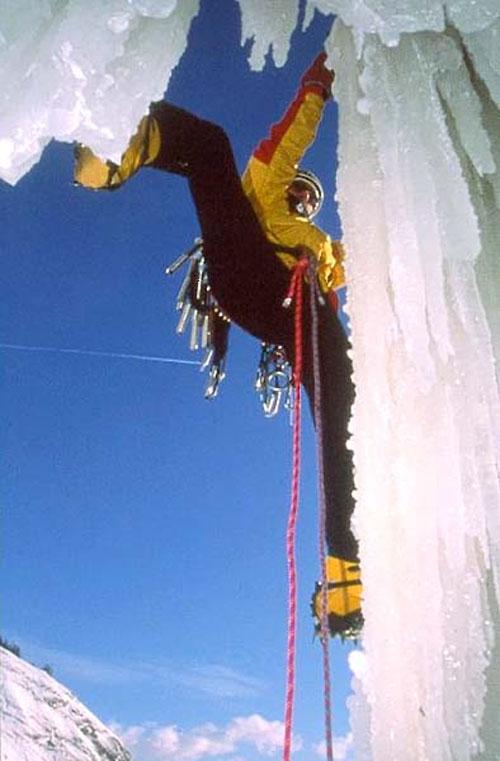
...posing the problem not only of moving from one type of ice to another, but also of changing your mindset, climbing techniques, etc.
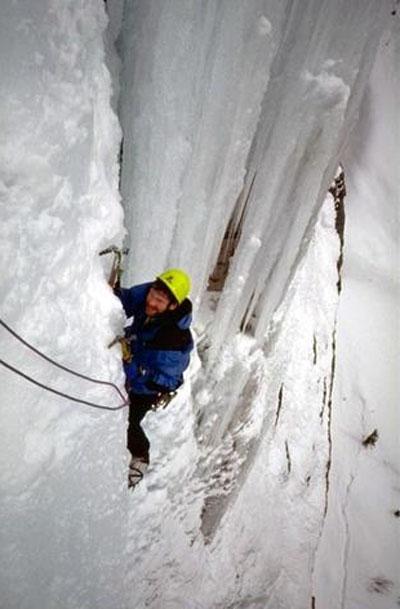
And, as you reach the very top, a swing of the ice axe may punch into the unfrozen water of the river which normally flows here - bringing water and water pressure down on the climber.
So why not go rock climbing, somewhere warm where you can wear shorts? It's because climbing is about challenge.
In the beginning, many climbers are challenged psychologically by the heights and physically by the work. As time goes by, the psychological challenge begins to fade. Exposure to heights no longer bothers a climber as much as it once did. Ice climbing, in particular, tends to elevate psychological awareness to one's environment and technique.
"I enjoy interacting with such a unique medium," says Jay Hack, a professional climbing guide. "It provides a sense of adventure and uncertainty that I can't get in day-to-day life. I've used the skills I've learned on winter ice climbs on high mountains all over the world."
Learning from a professional guide is a must, and ensures that novices learn the proper skills and techniques. This is absolutely not a trial-and-error learning situation.
Ice climbing is a part of learning to mountain climb, but the climbers who indulge in waterfall ice climbing are a special breed and very dedicated bunch, set apart from the others. Ice on a mountainside is adhered to the rock. Waterfall ice is not attached to anything but itself. You can only climb waterfall ice in the very coldest and driest of conditions, or else the ice will give way beneath you.
So what, you ask, could be crazier? Well, lately, the waterfall ice climbers have taken to climbing the frozen waterfalls which form on the sides of volcanoes - where the ground beneath the ice stack can actually be warm enough that the flow melts first from the bottom.
No feedback map is provided for this target, because sites for waterfall ice climbing are scattered throughout the extreme northern and southern latitudes of the world.
To learn more about waterfall ice climbing and instruction, and to gain more photographs of this daring sport, take a look at the following web sites:
Oddity Central
Seattle PI
American Alpine Institute (Bellingham)
North Cascade Mountain Guides (Mazama)
Mountain Madness (Seattle)
Alpine Ascents International (Seattle)